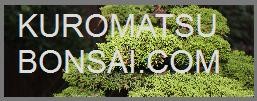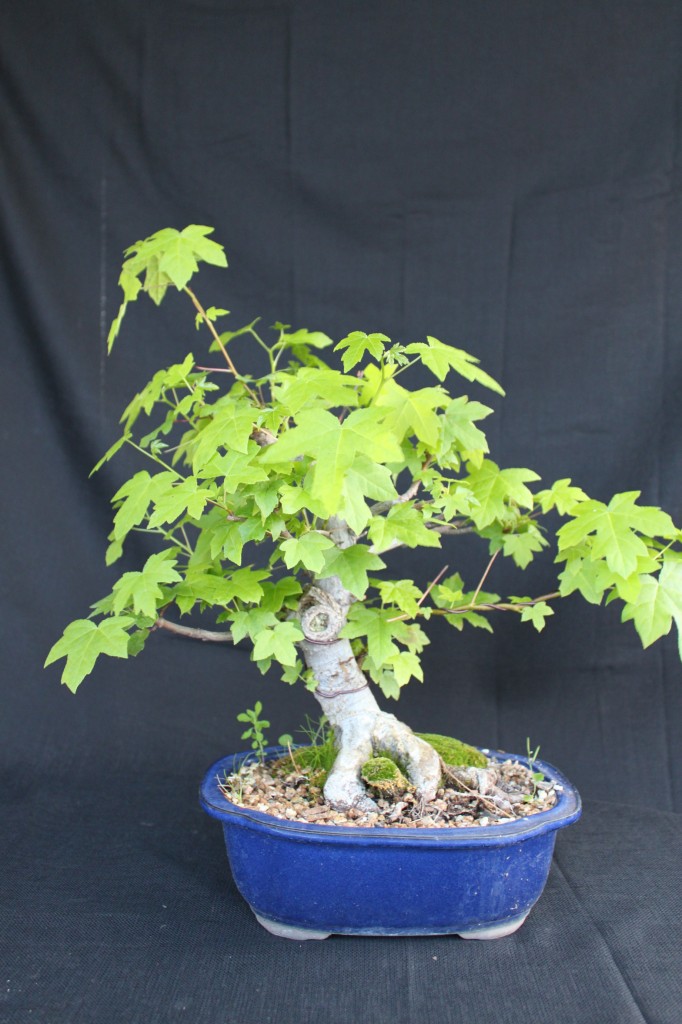Liquidambar Bonsai
Liquidambar Bonsai
Liquidambar bonsai are all about the fall color. There are numerous cultivars of the American Liquidambar designed to produce various leaf colors in fall, ranging from a butter yellow, to shades of orange and red, to a deep burgundy. The Asian variety has not been hybridized in such a manner, but its leaves will display a variety of yellows, oranges and reds in the fall. Unlike Japanese Maples, they will produce reliable fall color in warmer climates.
Background:
The Liquidambar, or sweet gum tree is a living fossil. Liquidambar trees were plentiful on earth until the last ice age, but are now reduced to four species with limited range. The four species are Liquidambar Acalcyna and Liquidambar Formosiana (Chang’s Liquidambar and Chinese Liquidambar, native to China and Southeast Asia and not often seen in the West), and the two species often used for bonsai: Liquidambar Styraciflua (American Sweet Gum, native to the Eastern United States) and Liquidambar Orientalis (Asian Sweet Gum or Turkish Sweet Gum).
Both varieties used for bonsai are vigorous growers which will back bud and throw suckers without any encouragement. In fact, the American Liquidambar is so powerful a grower, that there is an instance of one tree destroying a house, after the tree’s main trunk was cut down to the ground. The root system continued to live and send up suckers through the foundation of the house until the house was no longer stable.
Where to Get One:
There are three ways to get a Liquidambar for bonsai: 1) Buy one from a plant nursery. Liquidambars are used extensively for landscaping and as ornamental trees, and as stated above, there are many specific cultivars which are differentiated by fall leaf color. They are available in large container sizes, so the trunk thickness of the one you buy is limited only by your ability to haul it home. 2) Grow one from seed. Liquidambars produce seed bearing fruit in great profusion, so collecting seeds is easy, and they germinate readily. In fact, this is the easiest way to produce a grove or forest planting in bonsai. 3) Collect a rooted sucker. Liquidambars have very active, invasive root systems, and they produce suckers readily. If you can find a nice thick one and get it out of the ground with some roots on it, then you have yourself a bonsai.
What to do With it After You Get It:
Grow it to the desired thickness, then do a trunk chop in early spring. You can grow your liquidambar on in the ground or in a tub, but do not leave it in the ground too long. As described above, this tree can be truly dangerous if it is growing in the wrong place. You could end up digging your tree out and leaving behind live roots, and in a few years you could have a real problem. Liquidambar (especially American Liquidambar) responds well to a trunk chop.
Potting and Soil:
Liquidambars are good beginner material because they are not particular about soil or drainage, and can go for a long time without being repotted. However, like all bonsai, they should be potted in good bonsai soil. The preferred mixture is 60% aggregate to 40% organic matter. Aggregate can be decomposed granite, agricultural pumice, turface or diatomite, or fired clay pellets, such as Akadama, orchid pellets, or some brands of automotive spill absorbent. Supplemental fertilizing with a fertilizer designed for broadleaf trees or shrubs will encourage vigorous growth.
Although Liquidambars do produce fall color, large specimens seem to look better in unglazed pots.
Liquidambars should be repotted before they emerge from dormancy. They can be heavily root pruned without fear because of their vigorous growth habit.
Pruning and Shaping:
Liquidambars can be pruned at almost any time during the growing season. Use a very sharp scissors on new growth in order to avoid crushing or tearing the branch. Prune each shoot back to one or two pairs of leaves, unless you want a new branch at that location. New growth issues from the base of existing leaves, but do not cut back flush, as the branch may die back, especially with Asian Liquidambar. You should not wire a Liquidambar when the buds are first emerging, as they are easily knocked off the tree. Either wire before the tree buds, or wait until after it is in full leaf and new growth is hardening off. Large branches are not easily bent, and should be shaped by pruning.
Styling:
Deciduous formal upright is the natural style for the American Liquidambar, but it also works as an informal upright, semicascade, twin or multitrunk, and is especially suited to forest or grove styles. Asian Liquidambar is more suited to informal styles, but also makes striking grove or forest plantings.
Closing Remarks:
A Liquidambar bonsai is an easy to care for deciduous tree that will easily grow that coveted thick trunk, and give you a reliable show of fall color each year without a lot of effort.


